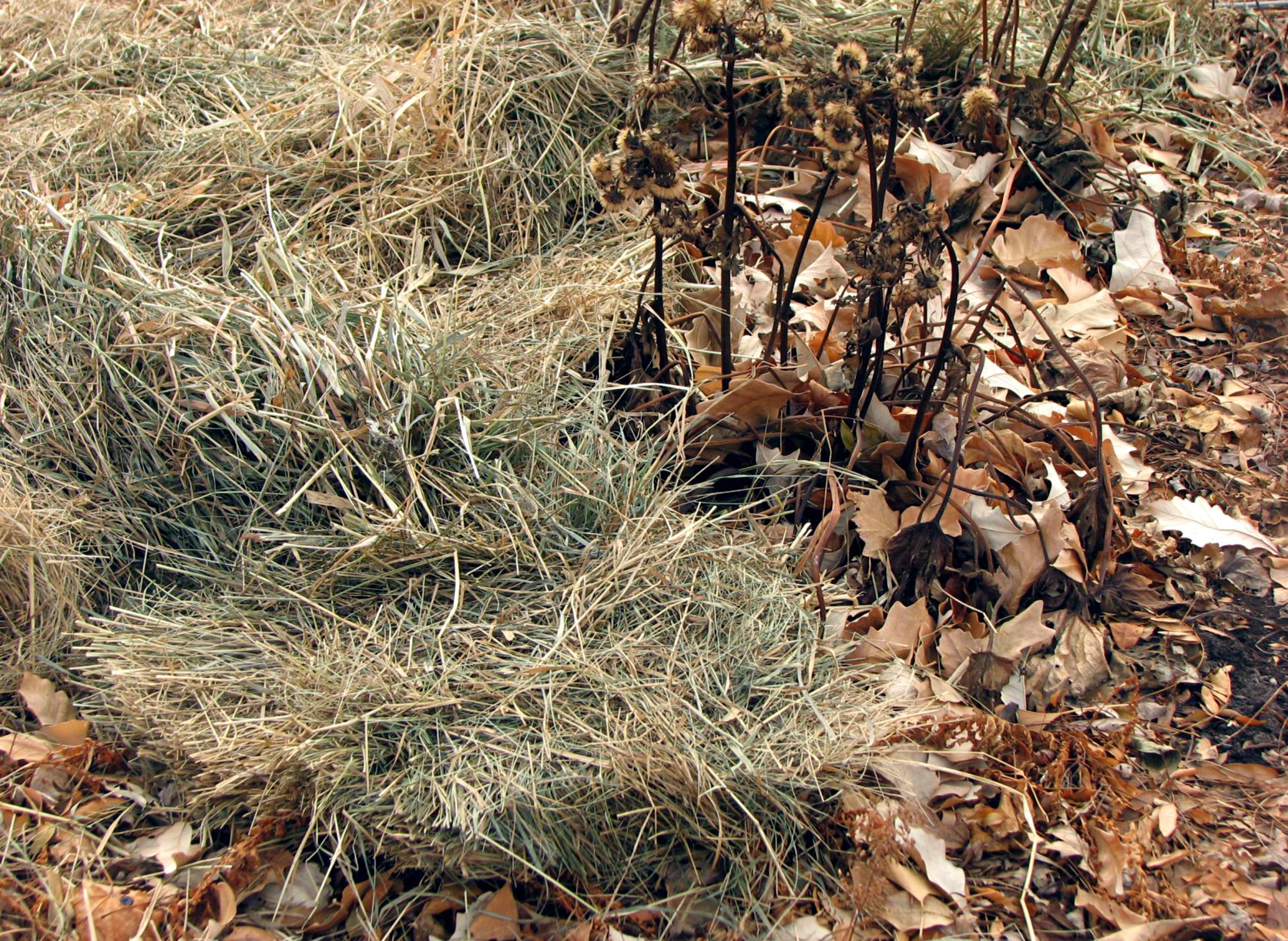
Winter Mulch Is A Protective Blanket For Landscape Plants

When the temperature dips well below freezing, many landscape plants need an extra layer of protection, especially if there's no snow cover. Mulching provides one of the best blanket covers to protect strawberries, certain perennials and various other plants from cold conditions.
Winter mulch is used to prevent soil from alternating between freezing and thawing conditions, contrary to a common belief that it protects the ground from freezing and offers warmth to plants. Repeated freezing and thawing occurs when there is insufficient or a complete absence of snow cover during periods of low temperatures. These changes force stems, roots, bulbs/tubers to heave out of the ground, and can severely damage or kill plants.
Straw is one common winter mulch. It provides good insulation, allows sufficient air movement, lacks in weed seeds (if it is a clean straw) and does not smother the plant like a mat. A bale of straw can easily cover 100 square feet to a depth of at least 3 inches. Other winter mulches that can be used are bark chips, hay (which may contain weed seeds), chopped corn stalks, pine needles and shredded leaves. Whole leaves, sawdust or grass clippings should not be used, though, as they can form a thick mat.
For perennials that lack aesthetic appeal in winter, their shoots should be pruned to about 2-3 inches above ground, and the crown should be mulched with straw or chopped leaves to a depth of about 6-8 inches. Ornamental grasses, black eyed susan and autumn joy sedums can be left alone given their winter interest in the landscape, though. Mums planted in the ground can be left unpruned, but need to be mulched around the crown.
Strawberries are not super hardy in Wisconsin's winter conditions, and their crowns can be easily killed if left unprotected when the temperature drops to 18°F or below. To mulch strawberries, the plants should be covered with straw, marsh hay or sudan grass to a depth of about 2-4 inches. It is important avoid tightly packing the crown when mulching strawberry plants.
Wood chip mulch should be applied to the root zone areas of trees and shrubs that are marginally winter hardy or planted within the last five years, to a depth of at least 6 inches. Chicken wire should be installed prior to mulching around tree bark for protection from rodents. In mid-late spring, the mulch can be reduced to 2-3 inches deep, and the should be kept around 6 inches away from the tree trunk. If there are any cracks near the root zone area, they should be filled in with soil.
While hardy shrub roses don't need any winter protection, it is best to mulch the bases of those that are newly planted or marginally hardy. The rose crown can be mulched using straw, hay, leaves or evergreen boughs to a depth of 8-10 inches, and the now-mulched plant can be wrapped with a hardware cloth to protect from rodents and wind.
Hybrid tea roses need a double layer of winter protection. When the temperature drops below 20°F for at least couple of nights, the canes should be mounded with potting soil to a height of 8-10 inches. Tall canes should be cut to 30-36 inches above ground, and the cane tips should be tied together using soft twine. When the mounded soil has frozen, a 10-12 inch layer of leaf or straw mulch can be added on top of the mound and the shrub should be wrapped with hardware cloth to protect from rabbits and voles. Rose cones should be used with caution, as they tend to build heat inside during sunny winter days.
Vijai Pandian is a horticultural agent and educator for the University of Wisconsin-Extension Brown County. This article is adapted from an item originally published by the Green Bay Press Gazette.


